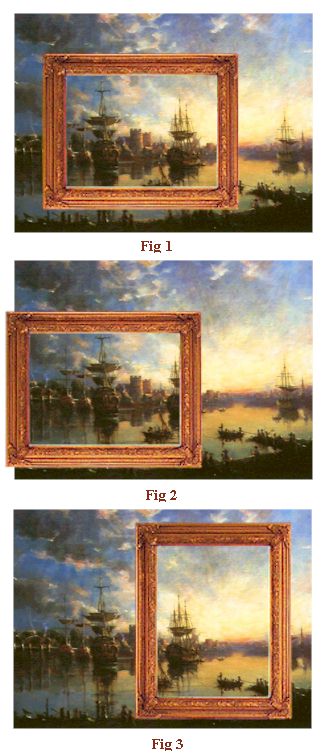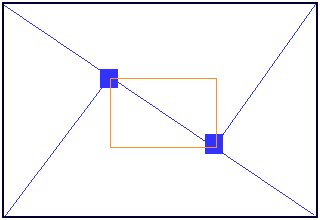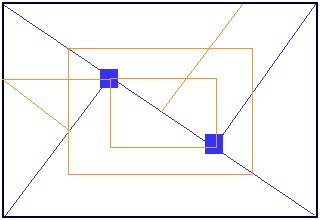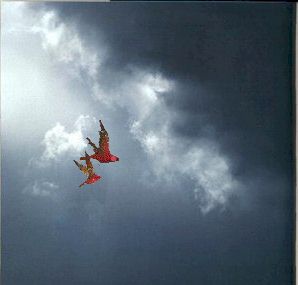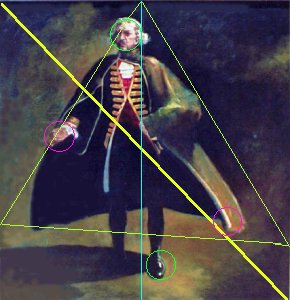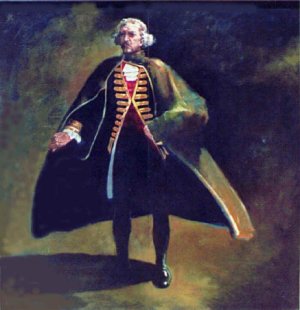5-3 DESIGN | |
|
TRUST YOUR INSTINCTS
(and get to the theory later)
Let us assume we are faced with the situation where the following picture must be cropped to fit a particular frame. How should it be done?
You probably have quite definite ideas about your preferred option ... and if I said I preferred No.2 you may decide I should seek serious counselling or some other form of professional help. Without explaining the complexities of physics, calcalus or harmonic proportion (all of which I forgot as soon as I gave up my promising career as a rocket scientist - I ran out of chalk). Still, I have found the following method a helpful starting point for the humble painter. 1. For primary accents - corners of the center rectangle.
Try and counterpoint a dominant accent with a two secondary or some minor accents (mostly outside the rectangle). Remember, everything is a balance with the relationship of all the parts to each other as they are to be sympathetic to the whole. Extra accents could lie on the corners of the second rectangle as shown below.
Remember the diagonals are powerful lines in any composition (below).
Later you will see where spirals and curves can also assist in forming the basis of compositions. An example- one of my most difficult design tasks was to construct a painting to form the frontpiece of my tryptic (a three paneled paining). I was faced with a square to be split down the middle - upon which I wanted to place a single portrait. The problem was I did not want the figure to look as if it were cut in two by and axe.
1.The diagonal forms the main element of the composition. 2.The triangle forces a relief to the diagonal and is the principal construct of the figure. 3. The green and red circles are counterpoint highlights equidistant about the split just like you would balance weights on a seesaw (fulcrum).
With enough counterpoints we can almost create pattern ... STUDENT ACTIVITY: download or cut and paste into your book a famous painting of your choice. Analyse, showing diagonals and counterpoints and explaining elements that bring the painting into 'balance'. Time:40min.
|
